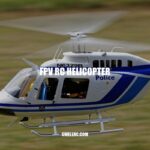Top Brushless Motors for RC Planes: How to Choose the Best
As the popularity of RC planes continues to grow, more and more hobbyists are turning to brushless motors as a way to power their flying machines. Brushless motors provide several advantages over traditional brushed motors, including higher efficiency, longer lifespan, and greater power output. However, choosing the best brushless motor for your RC plane requires careful consideration of several factors, including size, weight, power requirements and KV ratings. In this article, we will guide you through the process of selecting the best brushless motor for your RC plane and highlight some of the top performers on the market.
What are Brushless Motors?
- Brushless motors are a type of electric motor used commonly in RC planes.
- They differ from traditional brushed motors in that they operate without physical contact between parts.
- They use electronic control systems to regulate the flow of electricity, which makes them more efficient and longer-lasting than brushed motors.
- Some of the advantages of brushless motors in RC planes include:
- Higher efficiency and lower power consumption
- Longer lifespan due to the absence of brushes that wear out over time
- More power output and better torque than brushed motors
- Less noise and smoother operation
- Brushless motors come in a range of sizes and power ratings to match the needs of different RC planes.
Note: There are many websites and online stores that specialize in selling brushless motors for RC planes, such as HobbyKing, MotionRC, and Tower Hobbies. It’s essential to read product reviews and do proper research before making a purchase to ensure you’re getting the right motor for your plane.
What are the advantages of brushless motors in RC planes?
Advantages of brushless motors in RC planes include higher efficiency, longer lifespan, better speed control, and less maintenance required.
Factors to Consider When Choosing a Brushless Motor
- The size and weight of your RC plane will play a significant role in determining the best brushless motor for your needs.
- Other factors to consider include:
- The required power output of your motor, which can be calculated based on the weight and intended use of your plane
- The Kv rating of the motor, which is the number of revolutions per minute per volt (RPM/V) that the motor can spin when no load is applied
- The current rating of the motor, which refers to the maximum amount of current that the motor can handle before overheating or burning out
- Whether you want a sensorless or sensored motor
- Be sure to choose a motor that will provide enough power for your plane without being too heavy or too large.
| Brushless Motor Comparison | |
|---|---|
| Motor | Max Current Draw |
| Turnigy Aerodrive SK3 | 42A |
| E-flite Power 60 | 65A |
| HobbyKing X-Car Beast Series | 80A |
Note: The Kv rating of a brushless motor is an important factor in determining its speed and power. Generally, a higher Kv rating means a higher top speed, while a lower Kv rating means more torque and lower speed. It’s a tradeoff between speed and power. Some websites offer Kv rating calculators to help you choose the right motor for your needs.
What is the Kv rating of a brushless motor and how does it affect its performance?
The Kv rating of a brushless motor refers to the motor’s RPM per volt. The higher the Kv rating, the faster the motor will spin at a given voltage. This affects the motor’s performance by determining its maximum speed and torque output. A higher Kv rating means a higher top speed but lower torque, while a lower Kv rating means a lower top speed but higher torque.
Top Brushless Motors for RC Planes
- Turnigy Aerodrive SK3: This affordable motor offers an excellent balance of power and efficiency, making it an excellent option for many planes. It features a Kv rating of 1050, a maximum current draw of 42A, and a weight of only 108g.
- E-flite Power 60: This premium motor offers incredible power output and efficiency, making it ideal for larger and more advanced planes. It boasts a Kv rating of 400, a maximum current draw of 65A, and a weight of 344g.
- HobbyKing X-Car Beast Series: This heavy-duty motor is designed for high-performance planes that require a significant amount of power. It features a Kv rating of 1050, a maximum current draw of 80A, and a weight of 308g.
- Other notable brushless motors for RC planes include the AXI 2826/10, the Castle Creations Phoenix Edge Lite 75, and the T-Motor Navigator Series.
- Do some research and read reviews to find the best brushless motor for your specific needs and budget. Some websites provide a range of options and helpful guides to help you make the right choice.
Note: When researching brushless motors for RC planes, consider the specific needs of your plane and your personal preferences. Many RC hobbyists have their own favorite brands and models, so it’s essential to do your research and find what works best for you.
What factors should be considered when choosing a brushless motor for an RC plane?
Factors to consider when choosing a brushless motor for an RC plane are the size and weight of the plane, battery voltage and capacity, desired speed and torque, and the motor’s maximum current and power rating.
Conclusion
Choosing the best brushless motor for your RC plane can be a daunting task, but it’s important to take the time to find the right one. Consider factors such as size, weight, power requirements, and other features to make an informed decision. There are many brushless motors available on the market, and each one has its own strengths and weaknesses. By doing some research, reading reviews, and seeking out expert advice, you can find the perfect motor for your needs. Keep in mind that the best motor for one plane may not be the best for another, so be sure to consider your specific needs and preferences. With a quality brushless motor, your RC plane can perform better than ever before, providing you with hours of fun and excitement.



